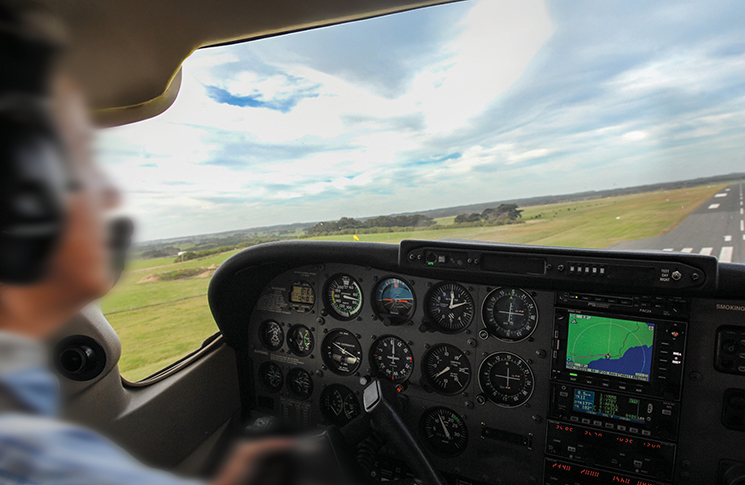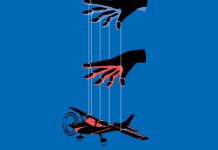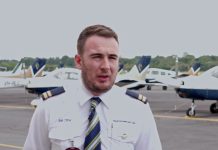As a pilot, every flight is an opportunity to learn and grow. One experience stands out as a stark reminder of the importance of vigilance, attention to detail and not letting things rattle you during a flight.
It was a clear, sunny day, perfect for flying. I had planned a cross-country flight from Canberra to Merimbula for a quick swim and lunch. I was bringing a friend who had never flown in a small aircraft before. I was going to overfly Moruya on the way to Merimbula, but did not plan to land there, due to a forecast of at least broken cloud at 3,000 feet.
Earlier that day, I had flown a group of friends over Canberra on one of the published ‘city flights’. After refuelling the aircraft, I put on the pitot tube cover to prevent insects from nesting.
I farewelled my friends and waited for my next passenger, who arrived late. We walked out to the aircraft and I explained our route.
Soon I was doing run-ups. Since I had flown earlier in the day, I was a bit complacent about the aircraft. Also, I was excitedly explaining all things aviation to my enthusiastic passenger. I requested airways and taxi clearance. After receiving clearance for take-off, I advanced the mixture and applied full throttle. I began my usual take-off checks … but a cold sweat instantly formed on my forehead when I saw the ASI not moving! Hadn’t I removed the pitot tube cover before the flight?
I aborted the take-off and informed the tower we would need to return to GA parking. I explained to my passenger there was something I had to check one last time before flying. Since he was new to small aircraft, I didn’t explain in detail the consequences of taking off without airspeed indication!
I took the pitot cover off and we climbed back into the aircraft. My passenger still seemed enthusiastic about the flight, but I was disappointed with myself, and I couldn’t shake it off. I tried to put it in the back of my mind and started the aircraft again. I requested taxi clearance, and we were soon on our way.
Wrong number
At Moruya, the weather had cleared earlier than predicted and having friends living close to the airport, we decided to land there instead.
I updated my flight plan and reviewed the weather and the ERSA for Moruya; however, having been there many times, the check was cursory.
Approaching the aerodrome, I switched to the CTAF and made my standard calls, announcing position and intentions. It didn’t look like there was anybody on the frequency.
Due to the previously forecast weather of a broken layer of cloud at 3,000 feet, I assumed that other pilots had avoided flying there.
During the approach and landing, I continued to make my calls, but the silence persisted. I continued rationalising that the frequency was simply not busy. The landing was uneventful and I taxied to the parking area, still under the impression that I was alone in the airspace.
But then I saw another aircraft on a different taxiway preparing for departure! Something was amiss! I couldn’t hear any radio calls. Why wasn’t the other pilot making a taxiing call? Then the realisation hit me – I had been on the wrong frequency the entire time!
Panic and embarrassment washed over me. I quickly checked my radio settings and discovered I had mistakenly tuned into Moruya’s former frequency. This oversight meant I had been flying blind, unaware of any other traffic in the area – and they unaware of me!
I can only imagine how confusing it must have been for the other pilot to see me land without hearing any of my radio calls. They were preparing for take-off, expecting clear communication from any incoming aircraft and my unexpected arrival must have been quite a surprise.
Although I knew Moruya’s frequency had changed, I had been there only a couple of times using the new CTAF; however, I had been there dozens of times using the old frequency.
I tied the aircraft down and went for lunch with an even bigger feeling of disappointment than the one earlier in the day.
After lunch, I decided to try to put it all behind and have a relaxed flight back home – after checking, double checking and triple checking everything! The flight home was uneventful, and my passenger is now considering doing a trial introductory flight.
Conclusion
Landing at an aerodrome using the wrong frequency was a significant error, but it was also a profound learning experience. It highlighted the importance of vigilance and thoroughness. I believe what started as a mistake at the controlled aerodrome, ended in another mistake later in the flight. This incident has made me a more cautious and conscientious pilot, always striving to improve and ensure the safety of every flight.
Lessons learnt:
This incident taught me several valuable lessons that have since become integral to my flying practices.
- Double-check frequencies: Always verify the correct frequency before entering an airspace. Cross-reference with charts and other resources to ensure accuracy. Do not rely on previous knowledge and really read the ERSA.
- Maintain situational awareness: Never assume that silence on the radio means an empty airspace. Continuously scan for other aircraft, check the radio volume and be prepared for unexpected traffic.
- Do not rush: Due to the pitot tube mistake, the radio situation and the change of plans, I was in a rush when I read the ERSA. Next time, I would slow down and even fly a dog leg in order to have more time to read and understand all the necessary information.
- Be prepared: If I could do the flight all over again, I wouldn’t just brief my approach and ERSA for my destination airport, but also for other airports on the way, in case there is a change of plans for any reason.
- Learn from mistakes: Try not to let them rattle you for the rest of the flight. Every mistake is an opportunity to learn. Reflect on errors, understand their causes
and make changes to prevent them recurring.
Controlled aerodromes and operations, along with non-controlled operations, are some of the special topics on our Pilot safety hub. Refresh your knowledge at casa.gov.au/pilots.
Have you had a close call?
8 in 10 pilots say they learn best from other pilots and your narrow escape can be a valuable lesson. We invite you to share your experience to help us improve aviation safety, whatever your role.
Find out more and share your close call.
Disclaimer
Close calls are contributed by readers like you. They are someone’s account of a real-life experience. We publish close calls so others can learn positive lessons from their stories, and to stimulate discussion. We do our best to verify the information but cannot guarantee it is free of mistakes or errors.






This gutsy story, reinforces the fact that we are human and prone to error. This pilot is not alone. While I may not have made exactly the same mistakes, I have certainly embarrassed myself horribly on several occasions.